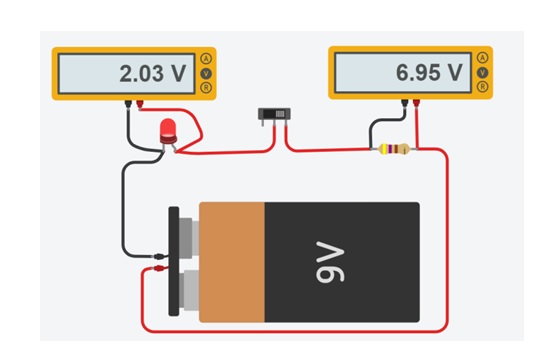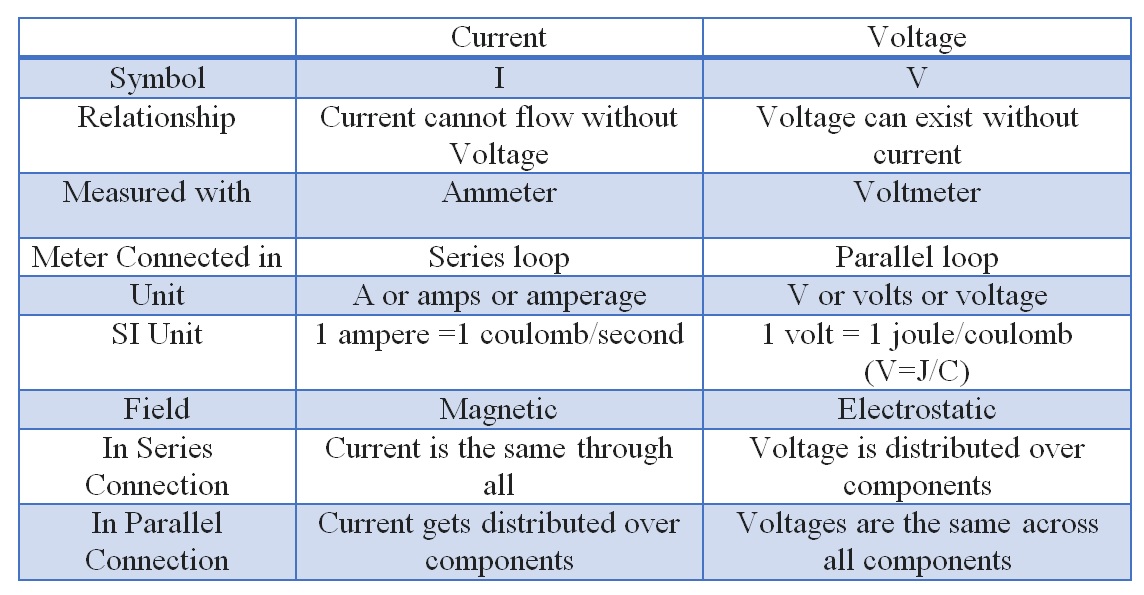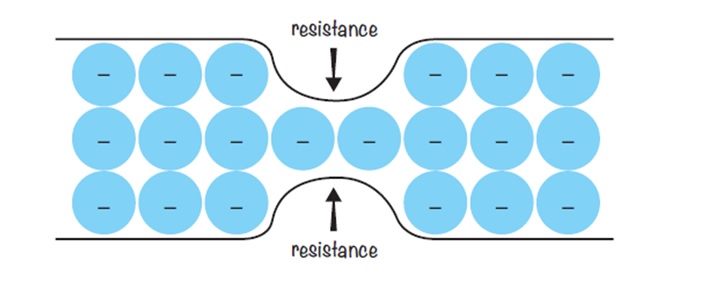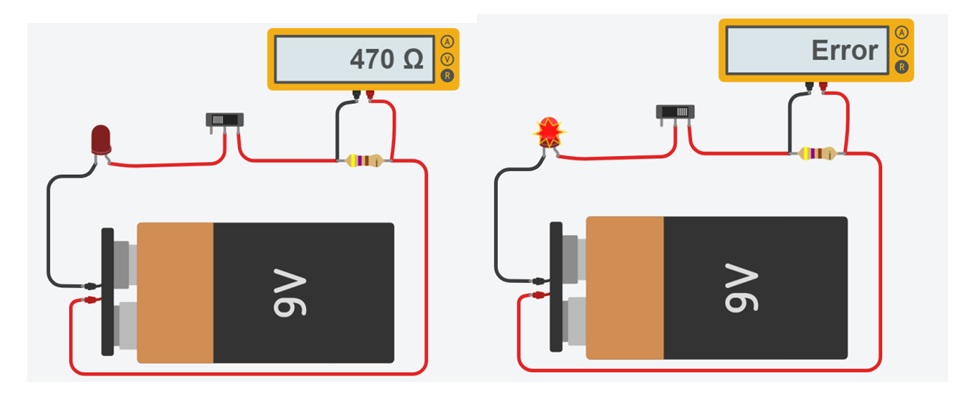Electricity, Voltage, Current and Resistance
In simple terms, electricity is a form of energy that we can harness and convert into heat, light, movement, and power. Electricity has three main properties that will be important to us as we build projects: current, voltage, and power.
Voltage (pushes the Electrons):

Voltage is the electric force that drives current around an electric circuit. Voltage is a measure of the difference in potential energy between a circuit's positive and negative ends. This is measured in volts (V). The greater the voltage, the faster the current moves through a circuit. A Voltmeter measure the potential difference between two points in volts. A Voltmeter used in parallel.

Most cells produce a voltage of about 1.5 V. The voltage of the mains supply is 230 V. At a power station, the voltage is higher and is measured in kilovolts, symbol kV. Small voltages are measured in milli volts, symbol mV. A milli volt is one-thousandth of a volt.

A current flows in a circuit if there is a potential difference (pd) between two points in the circuit. A pd may be produced in many different ways:
- Chemical action: as in an electric cell.
- Electricity generator: uses the energy of burning fuel (coal, oil, gas).
- Nuclear power: uses heat from nuclear reactions.
- Solar cells: use energy from sunlight.
- Wind farm: uses energy from wind.
Current (Flow of Electrons):

The flow of electrical energy through a circuit is called the current. Electrical current flows through a circuit from the positive side of a power source, such as a battery, to the negative side of the power source. This is known as direct current (DC).
Current is measured in amperes or "amps" (A). Small amounts of current are measured in milliamps (mA), where 1,000 milliamps equal 1 amp. An Ammeter measures current flow in amps. It is inserted into the path of current flow, or in series, in the circuit.

An ampere is defined as 6.241*1018 electrons (1 Coulomb) per second passing through a point in a circuit.

Voltage and Current Comparison

Resistance (Reduces the current)

Resistance (also known as ohmic resistance or electrical resistance) is a measure of the opposition to current flow in an electrical circuit.
Resistance is measured in ohms, symbolized by the Greek letter omega (Ω).An ohmmeter is used to measure the resistance of a device when no current flows. otherwise the meter resistance bypasses the component due to low resistance, and current in the loop increases. This may damage the components in the circuit.


Fill in the blanks
1. _____________ is the electric force that drives current around an electric circuit.
2. Voltage is measured in ______________.
3. The greater the voltage, ______________the current moves through a circuit.
4. Most cells produce a voltage of about _______V.
5. The voltage of the mains supply is _______ V.
6. 1000 milli Volt = _____________ Volt
7. 1 Kilo Volt = _____________ Volt
8. The flow of electrical energy through a circuit is called the __________.
9. Current is measured in _______________
10. 1000 milli Ampere = ______ Ampere.
11. 1000 Ampere = _________ Kilo Ampere.
12. 500mA = ________ A
13. ____________is a measure of the opposition to current flow in an electrical circuit.
14. Resistance is measured in ___________.
15. 2.2 Kilo ohm = _________ ohm.
16. 5600 ohm = ___________ Kilo Ohm.
Answers
1) Voltage 2)volts (V) 3) the faster 4) 1.5 5) 230 6) 1 7) 1000 8) current
9) amperes or "amps" (A) 10) 1 12) 0.5 13) Resistance 14) ohms 15) 2200
16) 5.6